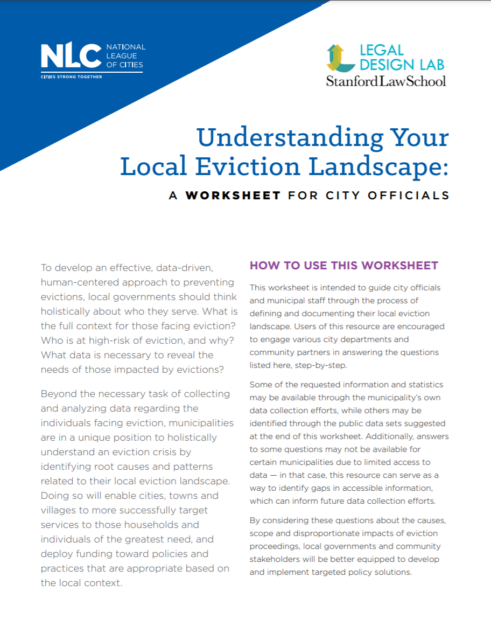To develop an effective, data-driven, human-centered approach to preventing evictions, cities need to have a holistic understanding of the nature and root causes of their local eviction landscape.
This fillable worksheet is designed to guide city officials and municipal staff through the process of defining and documenting the patterns and trends associated with evictions and eviction filings at the local level. This resource offers key questions that get to the root of identifying who is at high-risk of eviction, why and what is being done about it.
In completing this worksheet, local leaders will be prompted to move step-by-step and consider questions about:
- The scope of their local eviction crisis in terms of the local filing rate, executed evictions and reasons for eviction filings
- The dynamics of the local landlord community
- The demographics and risk factors of tenants facing evictions
- The economic and housing market factors underlying evictions
- The impact of the local housing policy and court processes
- Addressing racial inequities in current eviction systems
- Existing eviction prevention efforts and the involvement of community partners
By considering these questions about the causes, scope and disproportionate impacts of eviction proceedings, local governments and community stakeholders will be better equipped to successfully target services to those households and individuals of the greatest need, and to deploy funding toward policies and practices that are appropriate based on the local context.








